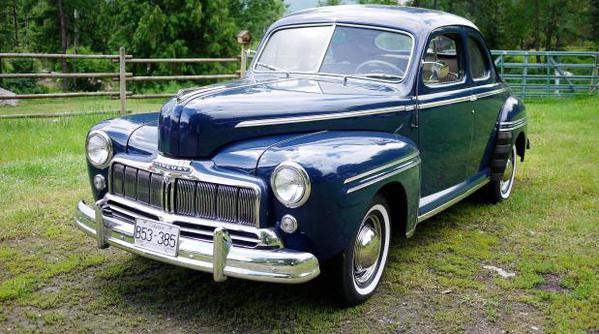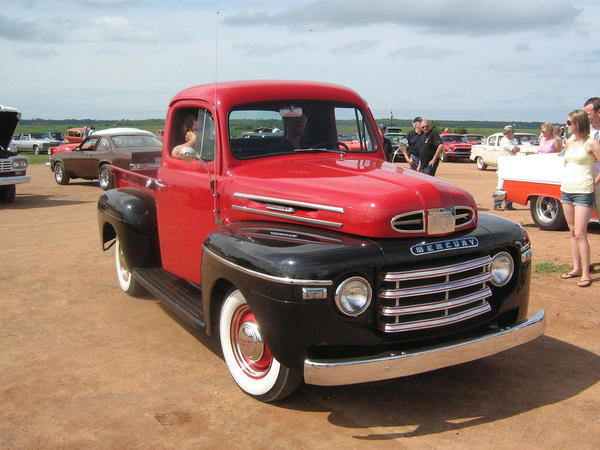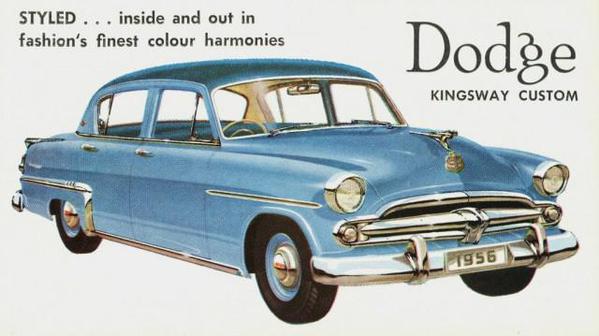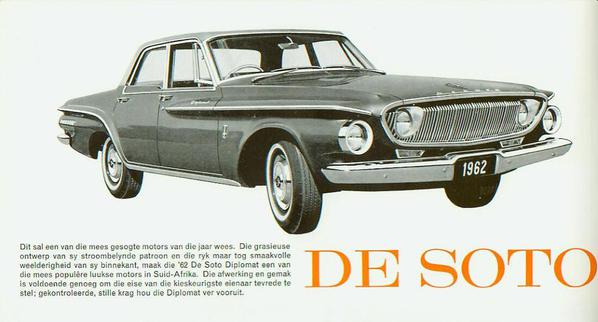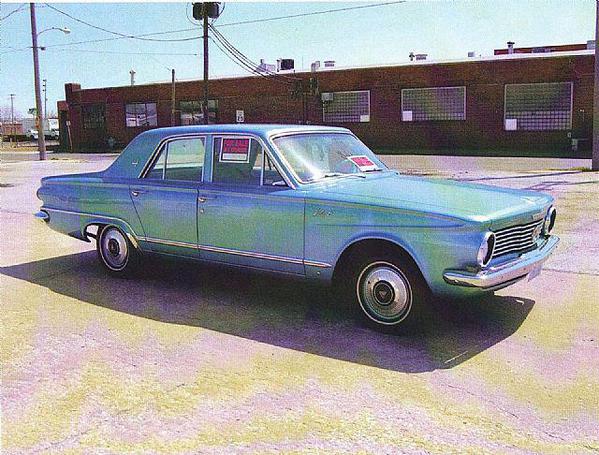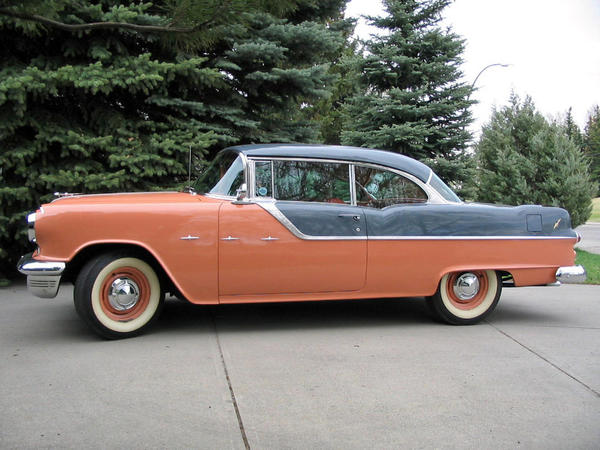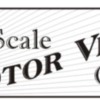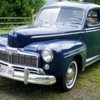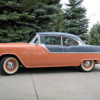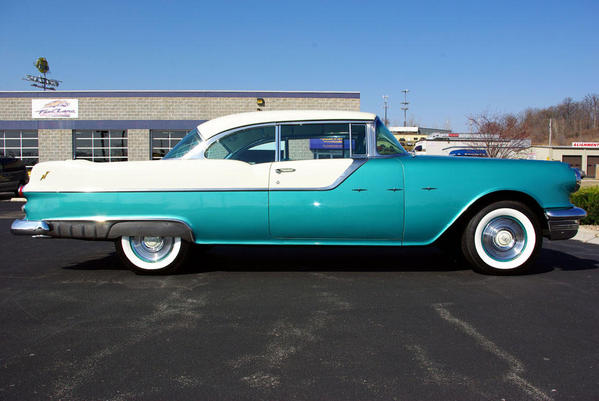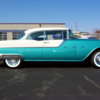A Few More Canadians
After WWII Ford-Mercury dealers split into two separate agencies. In 1946 Mercury dealers got the Mercury 114. It was essentially the smaller Ford with Mercury trim. In 1949 it became the Meteor. At the same time Ford stated selling the larger Mercury based Monarchs. 1961 Was the last Monarch and there was no 1958 Monarch, That spot was filled by the ill-fated Edsal.
1947 Mercury 114
Early Mercury Trucks were essentially Fords with unique Mercury trim. By 1950 they were identical to Fords except with Mercury badgeing
1950 Mercury M-1 pickup.
Likewise, early post war Canadian Dodge dealers sold Plymouth based Dodges along side US built models. These used Plymouth sheet all metal with Dodge trim until 1955. They were replace by the full sized Dodge Dart in 1960.
1954 Dodge Kingsway
DeSoto Diplomats, Although not sold in Canada, They used Plymouth sheet metal with DeSoto Trim until 1957. From 1960 to 1962 they were based on the Dodge Dart.
1962 DeSoto Diplomat.
The Valiant was a separate make in the U.S. in 1960 and in Canada it remained a separate marqe until 1967. Starting with the 1963 model they were based on the compact U.S. Dodge Dart with a Valiant front clip.
1963 Valiant
Canadian built Pontiacs were Chevrolets with Pontiac trim and flathead six. Starting with the 1955 model, they were mechanicly pure Chevrolet with a shortened Pontiac body.
Anybody remember the hullabaloo in the mid ‘70s when Oldsmobile put Chevrolet engines in some models?
1955 Pontiac Laurentain.
Other Later Unique Canadians.
From 1964 to 1981 Mercury dealers sold striped down Mercurys as Meteors, Although they were barely indistinguishable from a Mercury they were still a separate Marque.
Envoy- A badge engineered British Vauxhall.
Pontiac Arcadian- A thinly disguised Chevrolet Chevette
Pontiac Tempest- A badge engineered Chevrolet Corsica.
Plymouth Carevelle- Based on the Chrysler LaBaron/Dodge Diplomat. Originally a Canadian only model they eventually were available in the U.S.
Fargo trucks- -Badge engineered Dodge trucks. Originally an American truck manufacture and acquired by Chrysler in 1928. They were merged in with Dodge operations after Chrysler acquired the Dodge Brothers. In the late 1930s they were discontinued in the U.S. but continued in Canada until 1972.
DeSoto trucks- Badge engineered Dodge trucks for export.





